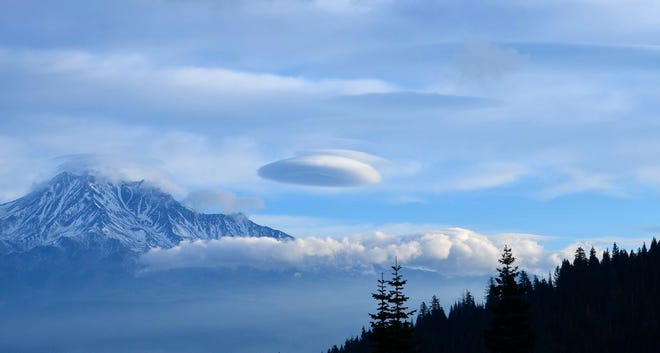Museum to host 'Legends and Myths of Mount Shasta'

Bill Miesse will answer questions about Lemurians and much more during his “Legends and Myths of Mount Shasta” presentation on Thursday, April 19, beginning at 7 p.m. at Mt. Shasta Sisson Museum.
A local historian, author and researcher, Miesse says, “I will describe some science writings and some spiritualist writings of the mid-1800s and show how those writings became incorporated into the Mount Shasta legends of the later 1800s and more recent time. Topics will include: Phylos and the Mount Shasta Brotherhood, Lemuria, Saint Germain and the Ascended Masters, UFO contactees, and Telos. One thing I won’t cover much about is the channeling activities of clairvoyant, because, as one wit put it, ‘Mount Shasta has more channels than cable TV.’
“I don’t get too controversial about these legends. I like them all. I will bring up the currently popular idea of ‘cognitive dissonance,’ which is defined as the mental discomfort of avoiding evidence contrary to what you believe. That idea, created by a team of sociologists in response to one of Mount Shasta’s famed spiritualists is a pretty wild, little-known story.
“I will also describe some of visitors’ experiences of other dimensions. I imagine that will be as controversial as anything. Most of the far-fetched stories people tell are controversial because they are unbelievable (until you have one yourself!). Within the last twenty years, someone discovered scientific evidence of ancient fossils (called cyclomedusas) that came from a continental source unlike anything else in California. It is thought to be a sedimentary rock created from the super-continent called Rodinea, a slice of a real lost continent! Mostly, though, I want to give a chronological mind-map of the basic legends and how they relate one to the other in time and concept.”
When asked why he became interested in the legends of Mount Shasta, Miesse replied, “When I first started reading about Mount Shasta I found out that the sunken Lemuria continent was a paleontologist’s concept, presented in 1864, to explain the land bridge migration of lemurs from India to Madagascar. Over time, the existence of a lost Lemuria became an idea adopted by many philosophical organizations and individuals around the world. In the 1920s, the documented connection between Mount Shasta and Lemuria began, and by the mid-1930s spiritual tourism to Mount Shasta to look for Lemurians was off and running. When I realized that very few people even knew that Lemuria was named for the lemur I got interested in what else people didn’t know.
“In 1992, I was hired by Dennis Freeman, head librarian at the College of the Siskiyous to evaluate over 3,000 documents and books in the library’s Mount Shasta archives. It amazed me how many articles and books existed about Mount Shasta’s art, science, literature and legends. Many of the documents were about Mount Shasta’s mystic reputation. I realized pretty quickly that the mystic lore was recycled again and again in new ways. The process gave me some clarity as to the evolution of the some of the spiritual ideas. And also I took note of the wide variety of experiences spiritual visitors were having.
“I find it interesting that most of Mount Shasta’s legends trace back to one book from the late 1880s. That’s a bit hard to take for some folks, because other later writers claim these ideas as their own. So I’ll show what I can to document that first book’s influence. Mount Shasta engenders lots of visionary experiences for people who come to mediate or explore their inner selves. Because people’s experiences are internal, it’s hard to illustrate what they are going through. But I have images of some artworks and informative photographs, that give an inkling of visionary experience and of the mystic history of the mountain.
“Being an art and image oriented person, I’ve found over the years cool pictures of Lemuria, and cloud-ships, and other unusual things. And I’ll try to show as many of the 100 years or so of off-beat spiritual books of Mount Shasta because that makes the history tangible.
Mt. Shasta Sisson Museum is located at 1 North Old Stage Road in Mt. Shasta and is open on Friday, Saturday, and Sunday from 10 a.m. to 4 p.m. during the months of April and May. After Memorial Day, the museum will be open seven days a week.

